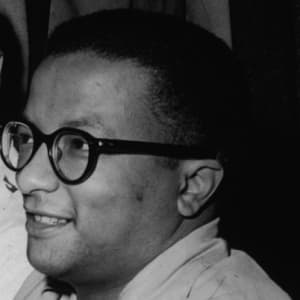
Melville Fuller
Melville Fuller was chief justice of the Supreme Court of the United States from 1888 until his death in 1910.
Synopsis
Melville Fuller was born on February 11, 1833, in Augusta, Maine. He graduated from Bowdoin College and attended Harvard Law School. He was elected as a Democrat to the Illinois Constitutional Convention of 1861 and to the State House of Representatives in 1862. President Grover Cleveland appointed him Chief Justice of the Supreme Court in 1888. He served until 1910, the year of his death.
Early Life
Born on February 11, 1833, in Augusta, Maine, Melville Weston Fuller presided over the U.S. Supreme Court as its chief justice for more than a decade. He graduated from Bowdoin College in 1853. After college, Fuller pursued a legal career. He trained in law in Bangor, Maine, and studied at Harvard Law School.
In 1855, Fuller set up his own practice in Augusta. But he didn't stay in his home state for very long. The following year, he went west to Chicago, where he became immersed in politics as well as the law.
Lawyer and Politician
In Chicago, Melville Fuller focused much of his legal work on issues related to real estate. He was also active in the Democratic Party. In 1860, he served as Stephen Douglas's campaign manager in his presidential run against Abraham Lincoln. While Douglas was unsuccessful in his efforts, Fuller himself won office a few years later. He was elected to the Illinois House of Representatives.
Though he served only one term, Fuller remained committed to his party. He campaigned on behalf of Grover Cleveland in the battle for the White House against Senator James G. Blaine from Maine in 1884. After Cleveland won the presidency, he offered Fuller several opportunities to serve in his administration. But Fuller turned down a diplomatic post and the position of solicitor general.
Chief Justice of Supreme Court
In 1888, President Grover Cleveland nominated Fuller to become the chief justice of the Supreme Court. He accepted this honor and was confirmed by Congress that July. During his 12 years on the bench, Fuller oversaw some of the court's most controversial rulings.
Two most notable cases that came before the Fuller court were Plessy v. Ferguson (1896) and Lochner v. New York (1905). With Plessy v. Ferguson, the court upheld a Louisiana law that called racial segregation in train cars. This decision helped reinforced the practice of racially divided facilities, including schools. The court later overruled itself with 1954's Brown v. Board of Education. In Lochner v. New York, the court struck down a state law that limited bakers' workweek to a maximum of 60 hours. The decision was viewed as the court acting in the best interests of business than the people.
Fuller was also known for ruling against a federal income tax in Pollock v. Farmers' Loan and Trust Company (1895). He remained chief justice until his death, on July 4, 1910, in Sorrento, Maine.
Personal Life
Fuller was married to Calista O. Reynolds from 1858 to 1864. Their union ended with her death. Two years later, he wed Mary Ellen Coolbaugh. The couple stayed together until Mary Ellen's death in 1904. Fuller had several children from each of his marriages.



